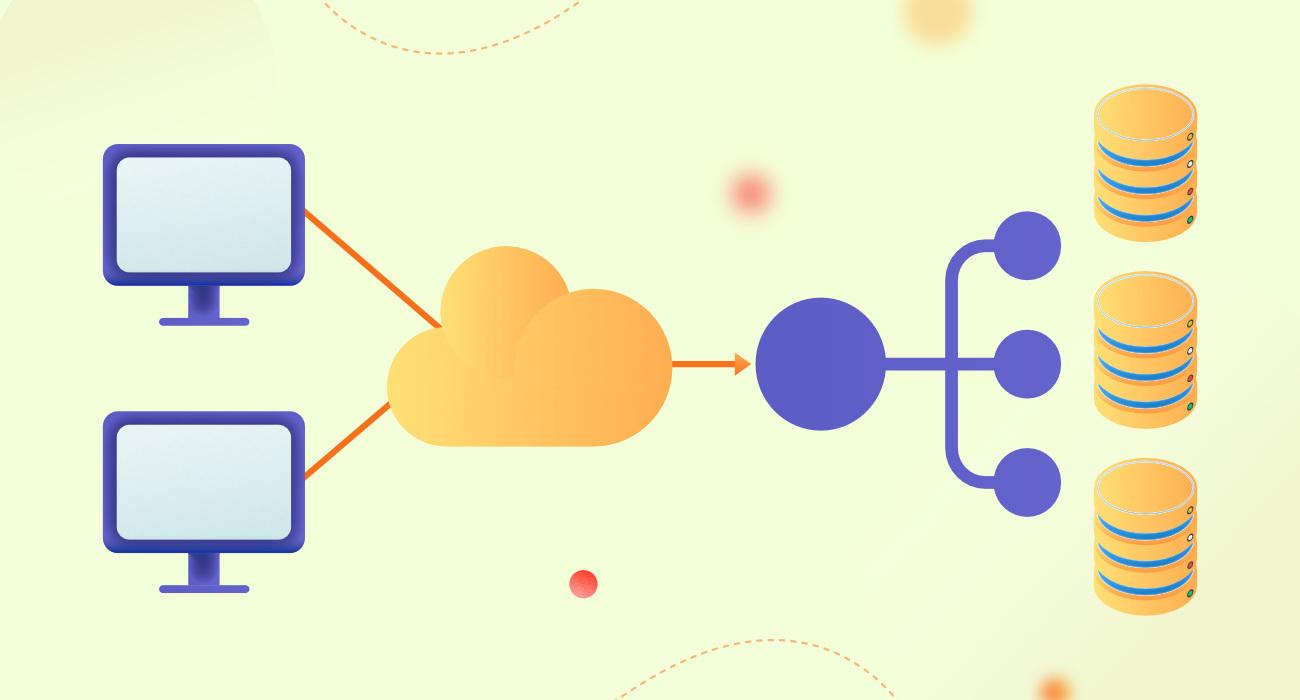Cloud computing has transformed how organizations work. It provides remarkable scalability and versatility. However, with this capability come cost-management challenges. For small and medium-sized firms, managing costs while leveraging the cloud is crucial. With 90% of AWS users in this group, reducing cloud expenses isn't just about saving money; it's about fueling growth, innovation, and customer satisfaction.
So, how can organizations harness the cloud without breaking the bank? Let's look at some efficient ways to optimize AWS expenses and ensure long-term growth.
The Challenge of Cloud Cost Management
Cloud computing's pay-as-you-go structure offers exceptional flexibility and scalability. However, if not managed correctly, this flexibility can lead to unanticipated expenditures. The primary challenges of cloud cost management include:
- A complex billing structure that makes it difficult to determine where your cloud charges are coming from.
- Figuring out the optimal approach to distribute resources for shifting workloads can be time-consuming.
- Identifying and dealing with idle or underutilized resources might seem like an extra responsibility.
- Allocating funds to specific projects, teams, or departments is frequently a hassle.
- Forecasting future cloud spending accurately is difficult due to the high variability of workloads.
Managing these difficulties demands an intelligent strategy. Therefore, it is critical to develop efficient cost management methods.
Strategies for Efficient AWS Cloud Spending
Optimizing AWS expenditure necessitates an organized plan that balances performance and cost-efficiency. Organizations can minimize cloud expenditures by using the measures listed below. This decrease can be made while preserving operating efficiency.
Rightsizing Resources
Matching computational resources to workload needs is crucial. Overprovisioning wastes resources, while underprovisioning hurts performance. Here's how you can efficiently manage resources and optimize expenditures:
1. Workload Analysis
Start with a detailed assessment of your needs. Identify the best instance types and sizes for your applications. For example, a detailed analysis might show that medium instances fit your regular tasks perfectly.
2. Auto Scaling Implementation
Use tools like Amazon EC2 Auto Scaling to adjust computing capacity dynamically. This prevents both overprovisioning and underprovisioning. Your service automatically scales up during peak hours and down during off-peak times.
3. Continuous Optimization
Regularly review and adjust your instance setups. As your workload changes, tweak your instance settings to match. This continuous optimization ensures you’re always using resources efficiently.
Example
Think of a company running a popular app. By rightsizing, they avoid paying for unused resources. They use Auto Scaling to handle sudden spikes in user activity. Additionally, regular reviews keep their setup efficient, saving money while maintaining performance.
Organizations can save a lot of money by carefully allocating their resources. This can be accomplished without sacrificing service quality.
Optimizing Reserved Instances and Savings Plans
AWS offers two key cost-saving options: Reserved Instances (RIs) and Savings Plans. Both provide significant savings for consistent usage. Here's how to use them effectively:
1. Reserved Instance Strategy
Analyze your workload patterns to find regular usage. For example, steady demand during business hours can benefit from Reserved Instances. This approach can lead to big savings. For instance, a growing e-commerce company can cut AWS costs during peak holiday seasons by reserving instances for those times.
2. Savings Plan Optimization
Balance flexibility and cost savings with Savings Plans. They allow switching between instance types and regions. A tech startup with variable workloads might find this beneficial. Reduced rates while adjusting usage across services offer significant savings.
3. Hybrid Approach
Combine Reserved Instances with Savings Plans for maximum efficiency. A data analytics firm reserves instances for regular tasks and uses Savings Plans for variable workloads. This approach can lead to a reduction in AWS spending.
Leveraging Spot Instances
Spot Instances allow fault-tolerant applications to dramatically decrease expenses. Bidding on empty EC2 capacity allows enterprises to save significantly.
- Workload Identification: Determine which workloads can withstand interruptions. Jobs that need batch processing and data analysis are suitable examples.
- Spot Instance Utilization: Strategically use Spot Instances for suitable workloads to save money.
- Interruption Handling: Create procedures to manage probable instance interruptions. When disruptions occur, try to minimize their influence on operations.
Organizations can improve resource consumption by efficiently executing these tactics. This leads to lower cloud expenditures.
Utilizing Cost-Saving AWS Services
AWS provides a wide range of services to minimize costs while preserving performance. Here are some services you can leverage to minimize costs:
- Storage Optimization: For cost-effective storage of seldom accessed data, use Amazon S3 Glacier.
- Serverless computing: Use AWS Lambda for event-driven or batch applications. It eliminates the need to provision and manage servers.
- Database Optimization: If you need high-performance, low-cost database solutions, consider AWS Aurora.
- Swift Content Delivery: Use Amazon CloudFront for quick content delivery. It helps to lower latency and related expenses.
Businesses may improve their cloud infrastructure by selectively implementing cost-saving services. This enables organizations to deploy resources more efficiently.
Monitoring and Cost Tracking
Continuous monitoring of cloud resource use is essential to maintain financial health and improve resource allocation by keeping track of associated expenditures. Organizations can implement effective monitoring strategies to find cost-cutting possibilities and avoid unforeseen charges.
Use different technologies and tools to measure resource use and detect irregularities. Furthermore, be proactive in addressing possible cost overruns. You can use tools like AWS Cost Explorer to divide costs precisely among teams or departments. This enables educated decision-making.
To ensure that resources are being allocated optimally, conduct regular cost assessments. Determine trends, cost drivers, and optimization options.
Implementing Automation and Best Practices
Automation is a critical component of successful cloud cost management. Routine jobs can be automated to improve resource usage and eliminate human error.
- Auto Scaling: Amazon EC2 Auto Scaling can alter computing resources in response to workload changes, ensuring that resources are utilized optimally.
- Resource Tagging: Create a comprehensive tagging strategy. This technique helps you categorize your resources, making cost allocation and tracking more efficient.
- Cost Optimisation Tools: Use the AWS Cost Optimization Hub for tips and best practices.
- Regular reviews: Conduct periodic reviews of the cloud environment to identify areas for improvement.
By adding automation to their procedures, organizations may build a strong foundation. With best practices in place, this foundation enables long-term cloud cost optimization.
Effective AWS cost optimisation isn't just about trimming expenses—it's about reallocating resources to drive innovation and sustainable growth. When businesses align cloud usage with real needs, they unlock both technical and financial agility.” - Harsh, CEO at Kuberns.com
Benefits of Optimized AWS Costs
Effective AWS cost optimization results in significant benefits for enterprises. By optimizing cloud expenses, firms may improve financial performance by redirecting savings toward innovation, research, or market expansion. Here are some of the advantages that you can get:
- Increase profitability by lowering operating expenses.
- Invest more in growth efforts while maintaining financial stability.
- Focus on high-impact projects and efforts to optimize resource allocation.
- Gain data-driven insights from cost analysis that can guide strategic decision-making.
- Ensure environmental sustainability by reducing the energy usage associated with cloud resources.
Organizations may fully realize the benefits of cloud computing by employing thorough cost optimization measures. This method protects their financial wellness. Finally, reduced AWS expenses enable enterprises to increase productivity, profitability, and scalability.
Conclusion
Optimizing AWS expenses is a journey rather than a goal. It involves ongoing monitoring, analysis, and correction. By applying the strategies mentioned above, you can save money on cloud computing.
Prioritizing cost optimization improves enterprises' financial health. This enhancement enables organizations to invest in expansion, innovation, and customer satisfaction. To guarantee long-term success, the business must foster a culture of cost-awareness and responsibility.
Businesses may maximize the benefits of AWS by taking a proactive approach to cloud cost management. This technique enables firms to achieve long-term growth on AWS.















Leave a Reply